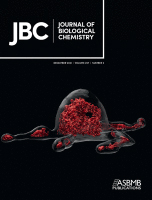- EN - English
- CN - 中文
Dual-target Bridging ELISA for Bispecific Antibodies
双特异性抗体双靶点桥接ELISA
发布: 2022年10月05日第12卷第19期 DOI: 10.21769/BioProtoc.4522 浏览次数: 4030
评审: Chiara AmbrogioMigla MiskinyteAnonymous reviewer(s)
Abstract
Bispecific antibodies (BsAbs) are typically monoclonal antibody (mAb)–derived molecular entities engineered to bind to two distinct targets, including two antigens or two epitopes on the same antigen. When compared to parental monoclonal antibodies or combinational therapies, the generated BsAbs have the ability to bridge the two targets and thus may offer additional clinical benefits. Characterizing BsAbs’ ability to bind to both targets simultaneously is critical for their biotherapeutic development. A range of bi-functional quantitative bridging assays to enable target-specific capture and detection of binding properties include enzyme-linked immunosorbent assay (ELISA), surface plasmon resonance (SPR), and cell-based flow cytometry. Developing suitable and robust cell-based bioassays is more challenging than non-cell-based binding assays because cell-based assays with complex matrices can be inherently variable and often lack precision. Compared to SPR, ELISA has a rapid setup and readily available method, being widely and extensively applied in almost every laboratory. Here, we describe a dual-target bridging ELISA assay that characterizes the ability of a HER2(human epidermal growth factor receptor 2)/PD-L1(programmed cell death ligand 1) BsAb in binding to both HER2 and PD-L1 simultaneously, a prerequisite for its envisioned mode of action.
Graphical abstract:

Background
Engineered bispecific antibodies (BsAbs) that recognize two separate antigens or epitopes are an emerging class of next-generation biological therapeutics. Such antibodies, capable of engaging multiple targets, shed new light on clinical treatments with the prospect of additive or synergistic mechanisms of action (MoA) and/or superior potency compared to monoclonal antibody (mAb) or combination therapies (Kontermann, 2012; Register et al., 2021). Many BsAbs are currently marketed as therapeutics in several disease areas, and more than 100 BsAbs have progressed into clinical pipelines (Kaplon et al., 2022; Register et al., 2021).
The binding assays are necessary components of in vitro BsAb characterization (Saldanha et al., 2018). They must be readily conducted during initial product development phases for the candidate screening and stability assessments and can therefore potentially be used as MoA-reflective potency assays (Lee et al., 2017). The bioassay strategy is outlined to characterize the independent or simultaneous binding affinities of a BsAb to their dual-antigen targets and demonstrate the full biological binding activity, which is the prerequisite of the envisioned MoA (Register et al., 2021).
Bridging ELISA is a type of sandwich ELISA that has been widely used in bi-functional quantitative assays that cover both binding events simultaneously. This assay is based on a bridging format and utilizes an immobilized capture recombinant antigen 1 in a solid phase (usually polystyrene microplates), followed by the addition of a biotinylated version of the antigen 2, to form the antigen 1–BsAb–antigen 2 bridging complex. The horseradish peroxidase (HRP)–labeled streptavidin is used as the detector. Major advantages of this method are the rapid setup, easy preparation of reagents, and effortless handling when compared to other bridging bioassays [e.g., surface plasmon resonance (SPR) or cell-based flow cytometry]. By applying this bridging approach, several BsAbs, including PD-L1/TIGIT (T-cell immunoreceptor with immunoglobulin and ITIM domain), HER2/PD-1(programmed death protein 1), 4-1BB(CD137) (tumor necrosis factor receptor superfamily 9)/HER2, and OX40(CD134) (tumor necrosis factor receptor superfamily 4)/4-1BB (Hinner et al., 2019; Ljungars et al., 2020; Chu et al., 2022; Mu et al., 2022), have been determined to being capable of binding to both targets simultaneously. The bridging ELISA assay should be viewed as a potential new standard and well-established procedure for measuring dual-target binding. Here, we focus on HER2(human epidermal growth factor receptor 2)/PD-L1(programmed cell death ligand 1) BsAb and describe an effective dual-target binding ELISA protocol that allows the measurement of a bispecific drug binding to both targets in a single assay format.
Materials and Reagents
96-well microplate (Greiner Bio-One, catalog number: 650061)
HER2/PD-L1 BsAb protein (Chen et al., 2021)
Recombinant extracellular domain of human programmed cell death ligand 1 (C-6His)(PD-L1-ECD) Novoprotein, catalog number: CM06)
Recombinant human epidermal growth factor receptor 2 (C-6His) (HER2) (Novoprotein, catalog number: CP69)
1% casein in PBS (Thermo Fisher Scientific, catalog number: 37582)
TMB substrate kit (Thermo Fisher Scientific, catalog number: 34021)
High sensitivity streptavidin-HRP (Thermo Fisher Scientific, catalog number: 21130)
EZ-Link Sulfo-NHS-LC-LC-Biotin kit (Thermo Fisher Scientific, catalog number: 21338)
Sulfuric acid (Sinopharm Chemical Reagent Co., Ltd, catalog number: 100216008)
PBS (Hyclone, catalog number: 16777-249)
Tween-20 (Sigma-Aldrich, catalog number: P1379)
0.05% PBST (v/v) (see Recipes)
2 M sulfuric acid solution (H2SO4) (see Recipes)
Trastuzumab (Selleck, catalog number: A2007)
Equipment
SpectraMax M5e microplate reader (Molecular Devices, catalog number: 89212-400)
Software
GraphPad Prism 9.0 (GraphPad Software, www.graphpad.com)
Procedure
文章信息
版权信息
© 2022 The Authors; exclusive licensee Bio-protocol LLC.
如何引用
Readers should cite both the Bio-protocol article and the original research article where this protocol was used:
- Pei, M., Wang, Y., Tang, L., Wu, W., Wang, C. and Chen, Y. L. (2022). Dual-target Bridging ELISA for Bispecific Antibodies. Bio-protocol 12(19): e4522. DOI: 10.21769/BioProtoc.4522.
- Chen, Y. L., Cui, Y., Liu, X., Liu, G., Dong, X., Tang, L., Hung, Y., Wang, C. and Feng, M. Q. (2021). A bispecific antibody targeting HER2 and PD-L1 inhibits tumor growth with superior efficacy. J Biol Chem 297(6): 101420.
分类
生物工程 > 生物医学工程
药物发现 > 药物筛选
生物化学 > 蛋白质
您对这篇实验方法有问题吗?
在此处发布您的问题,我们将邀请本文作者来回答。同时,我们会将您的问题发布到Bio-protocol Exchange,以便寻求社区成员的帮助。
Share
Bluesky
X
Copy link









